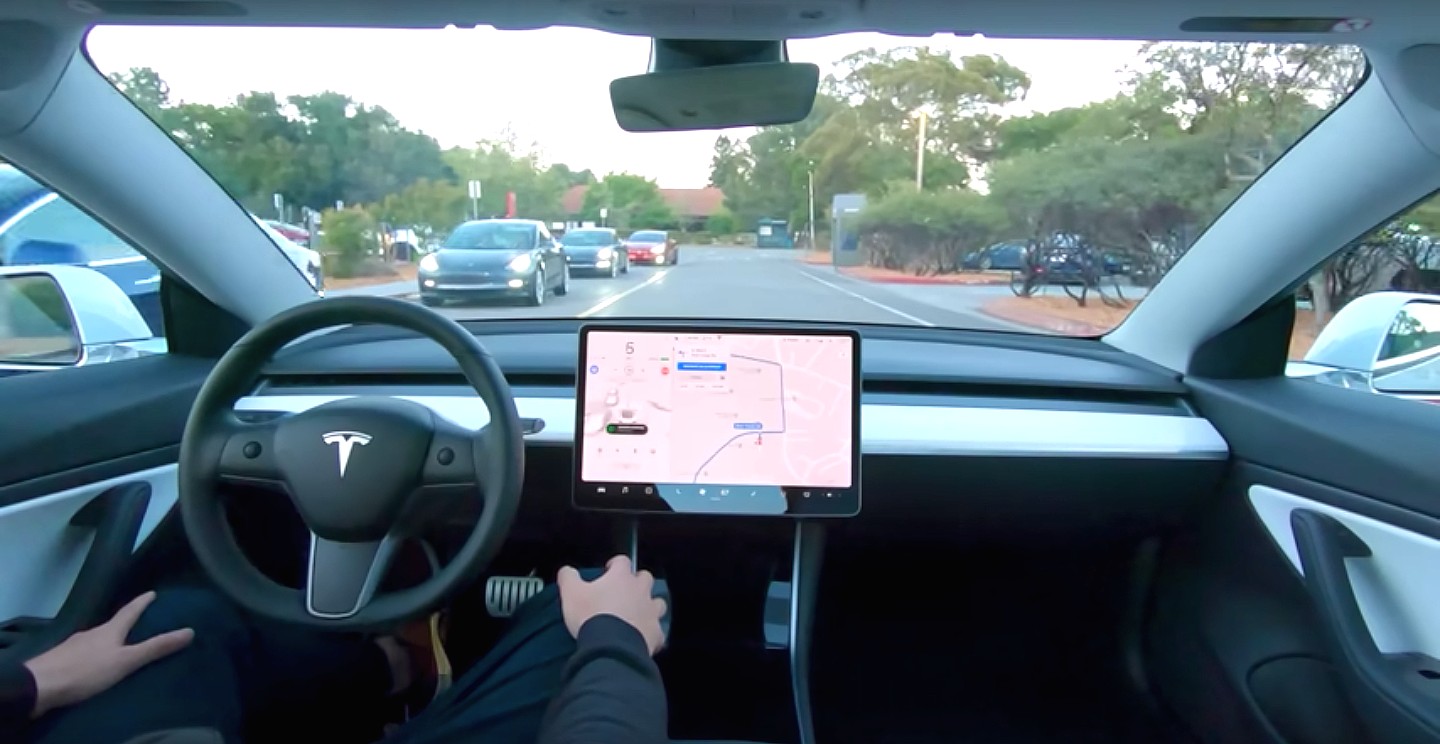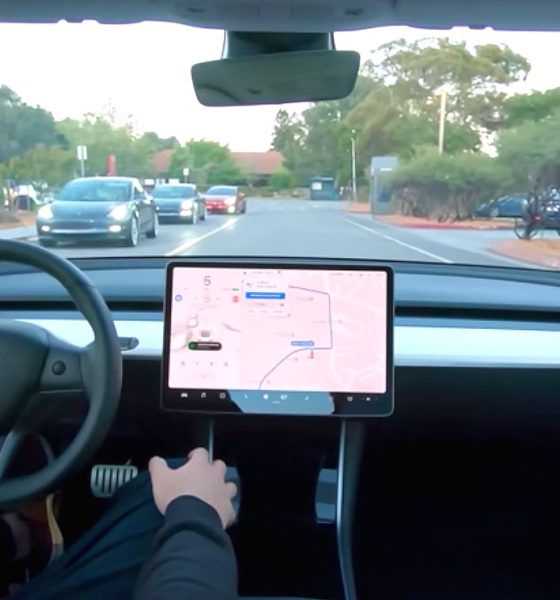

News
Tesla Autopilot, Full Self-Driving ‘marketing’ under fire from familiar U.S. senator
United States Senator Ed Markey is back to casting stones in the direction of Tesla’s Autopilot, calling for the Federal Trade Commission to investigate “potentially deceptive marketing.”
Markey, a notable critic of Tesla’s Autopilot systems, has had a history of being skeptical and calling for investigations of the company’s semi-autonomous systems on several occasions in the past. Now, Markey, along with Senator Richard Blumenthal of Connecticut, penned a letter to Lina Khan, the head of the FTC, stating they are concerned about Tesla’s “advertising” of Autopilot.
“Tesla and Mr. Musk’s repeated overstatements of their vehicle’s capabilities—despite clear and frequent warnings—demonstrate a deeply concerning disregard for the safety of those on the road and require real accountability,” the Senators wrote, according to the Wall Street Journal. “Their claims put Tesla drivers—and all of the traveling public—at risk of serious injury or death.”
Tesla has repeatedly overstated the capabilities of its Autopilot & Full Self Driving systems. These claims can endanger the safety of everyone on the road. @SenBlumenthal and I are calling on the FTC to investigate Tesla’s potentially deceptive marketing.https://t.co/77BtaIqvtM
— Ed Markey (@SenMarkey) August 18, 2021
Interestingly, Tesla’s statistics have shown Autopilot as an extremely safe alternative compared to human-controlled vehicles. Its most recent safety report had Autopilot-operating vehicles involved in accidents significantly less frequently than the national average.
The request from the Senators comes just days after the NHTSA launched an internal probe into around 765,000 Tesla vehicles built between 2014 and 2021. The root cause of the investigation concerns 11 incidents of Tesla vehicles crashing into emergency vehicles.
Tesla’s Autopilot probe worries Morgan Stanley with ‘reputational risks’
Tesla maintains that its Autopilot functionality is not a replacement for human driving altogether. The company states that drivers are required to remain attentive when operating with Autopilot and that they are required to remain alert to the vehicle’s operation and its surroundings.
On its website, under the FAQ section, a question, “Do I still need to pay attention while using Autopilot,” is listed. The company’s response is:
“Yes. Autopilot is a hands-on driver assistance system that is intended to be used only with a fully attentive driver. It does not turn a Tesla into a self-driving car nor does it make a car autonomous.”
Interestingly, several of the accidents under question were caused by the driver’s negligence operating the vehicle, including two cases where the driver was arrested for driving under the influence of alcohol. Another one of the cases involves a driver with a suspended license.
The Senators also included the notorious “Full Self-Driving” video that Tesla released in 2019, which shows a driver operating their vehicle without making any interventions. The video has over 18 million views on YouTube but does not reflect the vehicle’s current capabilities and is only a demonstration of what is to come from Tesla when it reaches Level 5 autonomy.
“As Tesla makes widely available its FSD and Autopilot technology and doubles down on its inflated promises, we are alarmed by the prospect of more drivers relying more frequently on systems that do not nearly deliver the expected level of safety,” the Senators wrote in their memo.
Don’t hesitate to contact us with tips! Email us at tips@teslarati.com, or you can email me directly at joey@teslarati.com.

News
Tesla starts showing how FSD will change lives in Europe
Local officials tested the system on narrow country roads and were impressed by FSD’s smooth, human-like driving, with some calling the service a game-changer for everyday life in areas that are far from urban centers.

Tesla has launched Europe’s first public shuttle service using Full Self-Driving (Supervised) in the rural Eifelkreis Bitburg-Prüm region of Germany, demonstrating how the technology can restore independence and mobility for people who struggle with limited transport options.
Local officials tested the system on narrow country roads and were impressed by FSD’s smooth, human-like driving, with some calling the service a game-changer for everyday life in areas that are far from urban centers.
Officials see real impact on rural residents
Arzfeld Mayor Johannes Kuhl and District Administrator Andreas Kruppert personally tested the Tesla shuttle service. This allowed them to see just how well FSD navigated winding lanes and rural roads confidently. Kruppert said, “Autonomous driving sounds like science fiction to many, but we simply see here that it works totally well in rural regions too.” Kuhl, for his part, also noted that FSD “feels like a very experienced driver.”
The pilot complements the area’s “Citizen Bus” program, which provides on-demand rides for elderly residents who can no longer drive themselves. Tesla Europe shared a video of a demonstration of the service, highlighting how FSD gives people their freedom back, even in places where public transport is not as prevalent.
What the Ministry for Economic Affairs and Transport says
Rhineland-Palatinate’s Minister Daniela Schmitt supported the project, praising the collaboration that made this “first of its kind in Europe” possible. As per the ministry, the rural rollout for the service shows FSD’s potential beyond major cities, and it delivers tangible benefits like grocery runs, doctor visits, and social connections for isolated residents.
“Reliable and flexible mobility is especially vital in rural areas. With the launch of a shuttle service using self-driving vehicles (FSD supervised) by Tesla in the Eifelkreis Bitburg-Prüm, an innovative pilot project is now getting underway that complements local community bus services. It is the first project of its kind in Europe.
“The result is a real gain for rural mobility: greater accessibility, more flexibility and tangible benefits for everyday life. A strong signal for innovation, cooperation and future-oriented mobility beyond urban centers,” the ministry wrote in a LinkedIn post.
News
Tesla China quietly posts Robotaxi-related job listing
Tesla China is currently seeking a Low Voltage Electrical Engineer to work on circuit board design for the company’s autonomous vehicles.

Tesla has posted a new job listing in Shanghai explicitly tied to its Robotaxi program, fueling speculation that the company is preparing to launch its dedicated autonomous ride-hailing service in China.
As noted in the listing, Tesla China is currently seeking a Low Voltage Electrical Engineer to work on circuit board design for the company’s autonomous vehicles.
Robotaxi-specific role
The listing, which was shared on social media platform X by industry watcher @tslaming, suggested that Tesla China is looking to fill the role urgently. The job listing itself specifically mentions that the person hired for the role will be working on the Low Voltage Hardware team, which would design the circuit boards that would serve as the nervous system of the Robotaxi.
Key tasks for the role, as indicated in the job listing, include collaboration with PCB layout, firmware, mechanical, program management, and validation teams, among other responsibilities. The role is based in Shanghai.
China Robotaxi launch
China represents a massive potential market for robotaxis, with its dense urban centers and supportive policies in select cities. Tesla has limited permission to roll out FSD in the country, though despite this, its vehicles have been hailed as among the best in the market when it comes to autonomous features. So far, at least, it appears that China supports Tesla’s FSD and Robotaxi rollout.
This was hinted at in November, when Tesla brought the Cybercab to the 8th China International Import Expo (CIIE) in Shanghai, marking the first time that the autonomous two-seater was brought to the Asia-Pacific region. The vehicle, despite not having a release date in China, received a significant amount of interest among the event’s attendees.
Elon Musk
Elon Musk and Tesla AI Director share insights after empty driver seat Robotaxi rides
The executives’ unoccupied tests hint at the rapid progress of Tesla’s unsupervised Robotaxi efforts.

Tesla CEO Elon Musk and AI Director Ashok Elluswamy celebrated Christmas Eve by sharing personal experiences with Robotaxi vehicles that had no safety monitor or occupant in the driver’s seat. Musk described the system’s “perfect driving” around Austin, while Elluswamy posted video from the back seat, calling it “an amazing experience.”
The executives’ unoccupied tests hint at the rapid progress of Tesla’s unsupervised Robotaxi efforts.
Elon and Ashok’s firsthand Robotaxi insights
Prior to Musk and the Tesla AI Director’s posts, sightings of unmanned Teslas navigating public roads were widely shared on social media. One such vehicle was spotted in Austin, Texas, which Elon Musk acknowleged by stating that “Testing is underway with no occupants in the car.”
Based on his Christmas Eve post, Musk seemed to have tested an unmanned Tesla himself. “A Tesla with no safety monitor in the car and me sitting in the passenger seat took me all around Austin on Sunday with perfect driving,” Musk wrote in his post.
Elluswamy responded with a 2-minute video showing himself in the rear of an unmanned Tesla. The video featured the vehicle’s empty front seats, as well as its smooth handling through real-world traffic. He captioned his video with the words, “It’s an amazing experience!”
Towards Unsupervised operations
During an xAI Hackathon earlier this month, Elon Musk mentioned that Tesla owed be removing Safety Monitors from its Robotaxis in Austin in just three weeks. “Unsupervised is pretty much solved at this point. So there will be Tesla Robotaxis operating in Austin with no one in them. Not even anyone in the passenger seat in about three weeks,” he said. Musk echoed similar estimates at the 2025 Annual Shareholder Meeting and the Q3 2025 earnings call.
Considering the insights that were posted Musk and Elluswamy, it does appear that Tesla is working hard towards operating its Robotaxis with no safety monitors. This is quite impressive considering that the service was launched just earlier this year.








